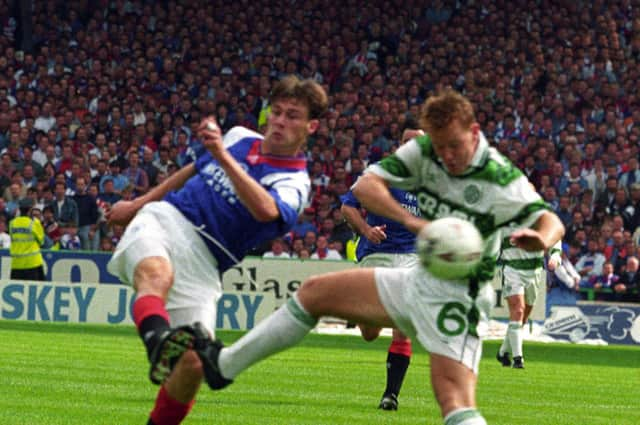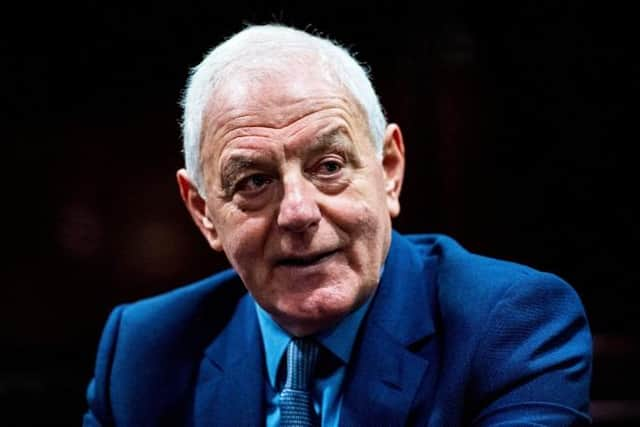Duncan Ferguson, the Dundee United and Rangers '£89 million' transfer sensation and why it won't ever happen again


Thirty years ago this month two Scottish football clubs broke the British transfer record. It’s fair to say this won’t ever happen again.
Indeed, only once since – when Scott Brown joined Celtic from Hibs 16 years ago - have two Scottish clubs agreed a deal for a player that exceeded the £4 million Rangers paid Dundee United for Ferguson in July 1993. It seems noteworthy that thirty years on - almost to the day - the British record has once again been broken, with two English clubs involved on this occasion, unsurprisingly.
Advertisement
Hide AdAdvertisement
Hide AdDeclan Rice's transfer from West Ham United to Arsenal was finally confirmed yesterday for an eye-watering £105m. But then it was ever thus.


The Athletic last year estimated that the value of Ferguson’s £4m transfer when he moved over a year later from Rangers to Everton was £89.1m in today’s money. The sports journalism website used a system that adjusts the fees to factor in increases in football inflation, based on revenue increases over time. Dundee United could build a whole new stadium, never mind pay for one stand, which is what they did with the Ferguson money, with that enormous sum.
Days afterwards, The People newspaper published a report re-branding Rangers as “Ran£ers” as they revealed “top Ibrox stars earned an incredible £100,000 each in bonuses alone last season”. It continued: “The staggering jackpot payout makes Walter Smith’s men the envy of players South of the border – and plenty across Europe, too.” Clubs like Arsenal, Manchester United and Liverpool, they pointed out, “are easily eclipsed by Rangers”.
Looking back now, the hubris is hard to ignore. “I don’t lie awake worrying about spending that amount of money. Maybe I would if I didn’t have it available. But I do,” said manager Walter Smith as the nation’s media turned its attention on Ibrox. The story featured as a lead item on ITV’s News at Ten. Much of the tone of the reporting was the mad world of football and its fantasy economics.
Hitting the £4m mark seemed significant – and ensured that Rangers took the title of biggest spenders in the land. The figure outstripped the £3.7m Blackburn Rovers paid Southampton for Alan Shearer the previous summer.
Just the night before Ferguson was unveiled at a press conference, David Platt had become Britain’s most expensive footballer, joining Sampdoria from Juventus for £5.2m. Days later Roy Keane signed for Manchester United from Nottingham Forest for £3.7m – the second highest transfer between two British clubs and Manchester United’s biggest transfer at the time.
“We are the biggest club in Britain and people had better realise it. There’s no limit to our ambition," said Rangers chairman David Murray.
It's sad to reflect that two main protagonists in the deal, Smith and McLean, are no longer with us. Aged only 56, McLean had recently stepped down as Dundee United manager and was now operating solely as chairman. Neither was Smith considering the deal from a purely footballing point of view; he was an Ibrox director.
Advertisement
Hide AdAdvertisement
Hide AdThe man who signed the cheque, meanwhile, has retreated from public life in the 11 years since he sold the Ibrox club for a token sum of £1 to Craig Whyte. It’s certainly very different to when Murray was front and centre of Scottish football and business firmaments. Ferguson, too, spent time out of sight, in prison for one thing, following the infamous clash with Raith Rovers’ Jock McStay, and in Majorca, where he moved after finishing his career at Everton.
He has become better known for being the first footballer jailed for an on-field offence rather than once having the status of Britain’s costliest footballer.
There is, however, a nice coda to what was such a major sports news story at the time. Dundee United supporters had other things to concentrate their minds late last season after their side’s relegation problems had escalated following a dire 3-1 loss at home to Ross County. But in the top tier of a stand, a pleasing narrative arc had been completed.
Ferguson had taken his place in the Eddie Thompson Stand, his stand, possibly for the first time since it was built with the money Rangers had paid for him.
The former enfant terrible was back at Tannadice as manager of Forest Green Rovers, a role he has since vacated. He has been replaced by Hannah Dingley, the first woman to take charge of a professional men’s team, albeit she has been appointed on an interim basis at present. It's certainly rarely boring when Ferguson's involved.
Back in May, he was scouting for players to take Forest Green Rovers back into League One. He had been unable to preserve their status in the third tier after taking over the then bottom side in January. The evening before he was at Ochilview, just a few miles from where he grew up in Bannockburn, to take in the Championship play-off clash between Queen’s Park and Partick Thistle.
His return to Tannadice seemed notable given the extent to which he once clashed with McLean, now of course honoured in the form of a statue at the back of the Eddie Thompson Stand. Ferguson would undoubtedly have noticed it on the way to his seat.
He might also have remembered what he told Grant Johnson, his former United teammate, on a return to the stadium with Rangers in 1993. Spotting the bank tangerine-coloured seats with the letters D-U-F-C newly picked out in black, he turned to Johnson and, with two short sentences, proved the myth behind his supposed dim-wittedness.
“That’s no’ right,” he said.
“There should be an N in it – DUNC!”
Comments
Want to join the conversation? Please or to comment on this article.